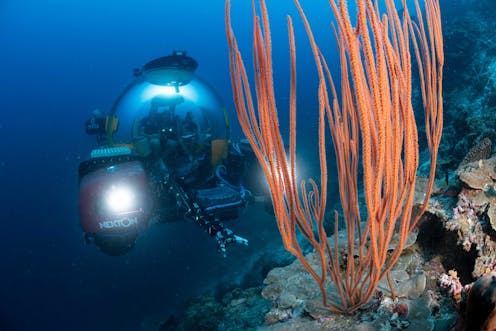
Sunlit coral reefs are perhaps the most famous marine habitat and many people will have snorkelled over or dived down to one at some point. Home to a quarter of all known ocean life, these “rainforests of the ocean” have been at the forefront of marine research for decades and been featured in documentaries like Blue Planet and animations such as Finding Nemo.
However, reefs and corals do not stop where the sunlight becomes scarce. Largely hidden from the masses lie great expanses of deep reefs, which collectively have a larger geographic footprint than their shallower counterparts.
Sandwiched between shallow reefs and the deep-sea, reefs between 30 and 300 metres to this day receive relatively little scientific attention, considered too deep for shallow-water reef biologists and too shallow for deep-sea researchers. Combined with the costs and challenging logistics of studying them, and due to the widespread impression that they face few threats by simply being deep, despite evidence to the contrary, deep reefs remain notably underexplored.
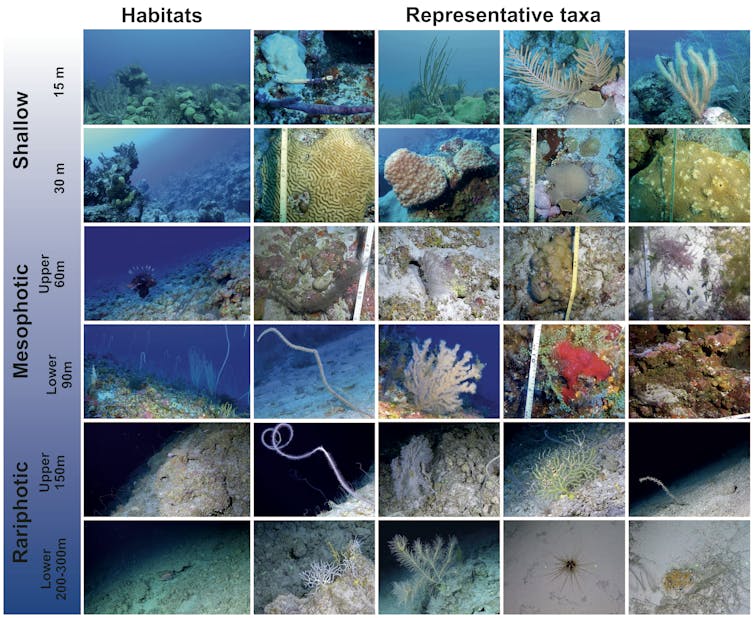
Luckily, recent advances have allowed us to learn more about these unique ecosystems. Specialised scuba equipment, known as technical diving, can get you down to 150 metres, and remotely-operated or autonomous vehicles, or even small manned submersibles, can go even deeper.
As we go deeper and less light penetrates the water, hard corals and other light-dependent organisms that dominate the shallows become less abundant. They’re replaced by other photosynthetic groups such as fleshy algae, until they too get replaced by sponges, soft corals and sea fans.
I have had the privilege of being inside a submersible a dozen times now, in which an acrylic hull gives you an almost 360 degree view of underwater life. The feeling is unique as you get to visit the depths of our ocean and observe its creatures – stuff you typically only see in documentaries – firsthand. Massive sea fans are a particularly amazing sight, often more than 2 metres across:
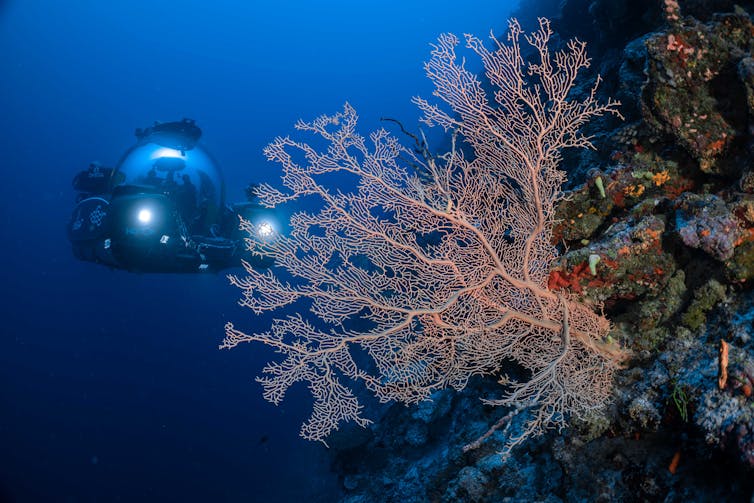
I have had several encounters with reef sharks, floating tube-like pyrosomes and bioluminescent comb-jellies, but the interactions I most enjoy are with the ever-curious potato groupers that will follow and hang around the submersible and even pose for photographs:
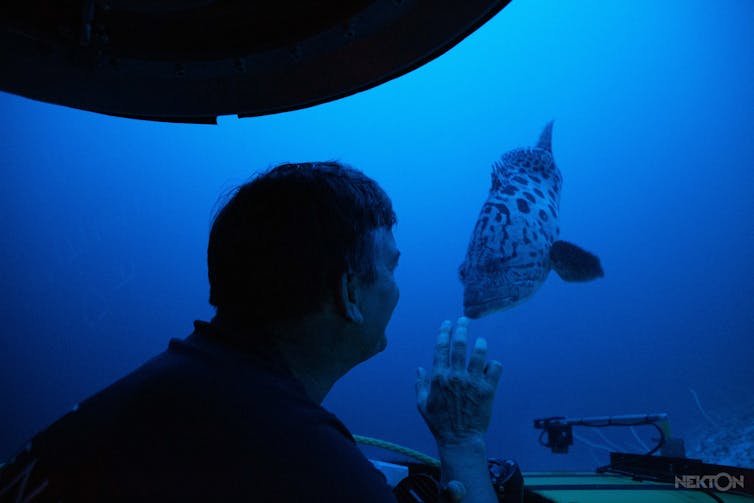
Fish are more mobile than corals or sponges and so the fish species at at the topmost deep reefs are still mostly-familiar. However as you go deeper the fish gradually become more and more unique and adapted to the low-light, low-food conditions of deep reefs.
Notably, it is only a few years since scientists first described and categorised a new reef zone – the rariphotic or rare-light zone between around 150 metres and 300 metres in depth. The unique collection of seabed organisms and fish helped define this depth range as an entirely new reef ecosystem. Since we are only beginning to scratch the surface of deep reefs, many more exciting discoveries will follow in the coming years.
Deep reefs need targeted conservation
Deep reefs provide a plethora of essential services for people and the planet. They help protect coasts from waves and storms, they provide breeding grounds and protection for fish, and refuge for some organisms residing in much-imperilled shallow reefs. Natural medicinal products have also been discovered in deep reef species, including anti-tumor and anti-fungal compounds found in sponges collected from 125 metres deep in the Pacific island nation Palau.
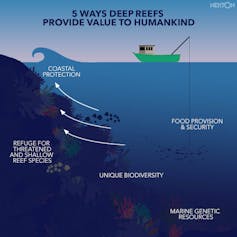
The logistical and financial challenges of studying deep reefs means there is less data available than for shallow reefs, and deep reefs are rarely used to inform management and conservation activities. Though their unique biological communities warrant targeted conservation efforts, most deep and offshore reef habitats are still unprotected. The few that are protected are often included incidentally due to geopolitical boundaries and rarely explicitly included in management plans and designation targets.
How we can save deep reefs
I’m part of a team of 18 scientists from different organisations around the world who have recently developed a framework for conserving deep reefs in the Western Indian Ocean, home to some of the world’s least known deep reefs. Our framework includes practical recommendations, which we hope will enhance deep-reef stewardship throughout the region and could eventually be adopted globally.
Below are the our top five recommendations:
Protect: Highly protect 30% of ecosystems by 2030 (“30 by 30”), and include deep reefs in this target.
Conserve: Conserve deep reef ecosystems and their resources by specifically including them in fishery regulations, marine protected areas and marine spatial planning.
Manage: Extend current management efforts on shallow reefs to include deep reefs as these ecosystems are often connected.
Invest: Invest in foundational, fundamental and applied research on deep reef biodiversity, ecosystem functioning and provided services.
Collaborate: Develop national and international collaborations to survey and conserve deep reefs in national and international (High Seas) waters.
Paris Stefanoudis is affiliated and receives funding from the Nekton Foundation.
This article was originally published on The Conversation. Read the original article.







